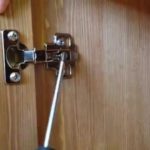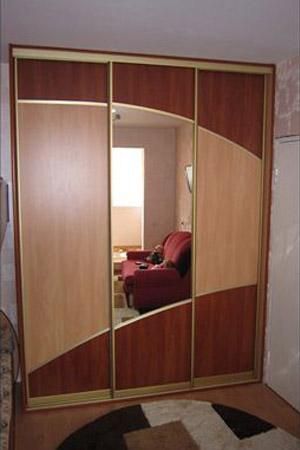How to remove a wardrobe door
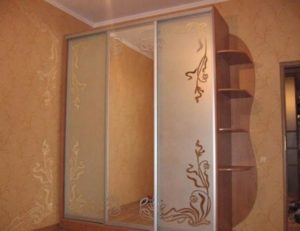 A sliding wardrobe is a practical piece of furniture that has undeniable advantages over its hinged counterparts. It makes it possible to save free space, is easy to use, has many variations in finishing, however, the cost of the products can hardly be called low. This is due to the high cost of sliding mechanisms, a significant amount of time and effort for assembly, as well as further installation. Costs await the owner even if any element breaks down - disassembling furniture is much more difficult than assembling it. How to remove a closet door so that they remain undamaged? It is quite possible to do all the work yourself, especially if in this case you are ashamed to use the services of a master or you want to save a little money. Remove sliding doors from closetbut don’t try it with your own handslema.
A sliding wardrobe is a practical piece of furniture that has undeniable advantages over its hinged counterparts. It makes it possible to save free space, is easy to use, has many variations in finishing, however, the cost of the products can hardly be called low. This is due to the high cost of sliding mechanisms, a significant amount of time and effort for assembly, as well as further installation. Costs await the owner even if any element breaks down - disassembling furniture is much more difficult than assembling it. How to remove a closet door so that they remain undamaged? It is quite possible to do all the work yourself, especially if in this case you are ashamed to use the services of a master or you want to save a little money. Remove sliding doors from closetbut don’t try it with your own handslema.
The content of the article
Wardrobe door mechanism
Having ventured into such a risky undertaking, you need to inspect the mechanism, first of all - a decisive attitude and motivation alone are not enough. There are only two principles for installing doors on a wardrobe:
- Cheap and not very popular, and the quality is questionable. The doors are hinged and move along the top rail.
- Reliable and widespread, and also more expensive.The movement of the doors is ensured by the lower rail, which takes on a large load, and the upper one performs a guiding function.
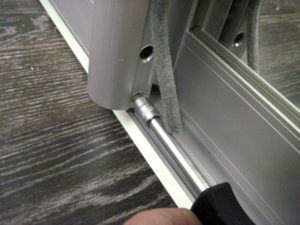
REFERENCE. The first type of mechanism is equipped with small cabinets whose doors do not have significant weight. The second is high-quality and reliable products, since in this case the sashes are firmly fixed and malfunctions are almost impossible.
We disassemble the wardrobe
Manufacturers are trying to simplify the process of assembling and disassembling furniture as much as possible, so for the job you only need a screwdriver and an assistant. In addition, it is recommended to immediately prepare a container for storing screws and other small parts, and also write down the sequence of actions. Before dismantling, it is necessary to remove all things, remove drawers and shelves. The same applies to glass elements and mirrors.
Removing the doors
The process requires care and accuracy, especially if the doors have a permanent mirror surface. Careless movement or haste can lead to damage, which means additional expenses. Procedure:
- You should start with the first door, which you need to slightly lift and pry off the lower rollers with a screwdriver.
- Next, the door is slightly pulled towards itself, and its lower part extends beyond the bottom rail. Excessive force is contraindicated here, otherwise the upper guide may be deformed.
- Finally, you need to lower the door down at a slight angle - in this case it will easily come out of the top rail.
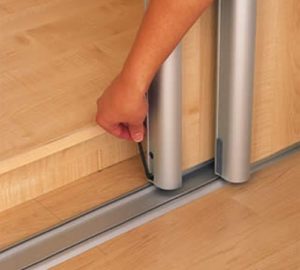 The second door is removed in the same sequence. With an assistant, things will go much faster, and the likelihood of damaging anything will be much lower. If the wardrobe is equipped with hinged doors, then the procedure for removing them is slightly different.To do this, you will need a wrench to loosen the clamping bolts. Next, you should slightly pull the sash towards you and carefully remove it from the grooves. More expensive cabinets can be equipped with additional equipment, for example, closers, clamps, and an additional frame. In the case of closers and a latch, you should start with them, and in structures with a frame, you need to remove its fixing parts, which will allow the doors to roll out easily.
The second door is removed in the same sequence. With an assistant, things will go much faster, and the likelihood of damaging anything will be much lower. If the wardrobe is equipped with hinged doors, then the procedure for removing them is slightly different.To do this, you will need a wrench to loosen the clamping bolts. Next, you should slightly pull the sash towards you and carefully remove it from the grooves. More expensive cabinets can be equipped with additional equipment, for example, closers, clamps, and an additional frame. In the case of closers and a latch, you should start with them, and in structures with a frame, you need to remove its fixing parts, which will allow the doors to roll out easily.
Removing cabinet shelves
Furniture shelves are located horizontally and are designed for storing things, while they are fastened with a variety of fittings:
- the eccentrics are removed using a Phillips screwdriver and are located under the shelves, which are removed by moving upwards;
- European-style screws will require a hex wrench, which can be used to unscrew the end fasteners first, and then the side ones;
- When fixing the shelf with hexagons, you will need to remove the covers of the plastic elements, and then unscrew the screws.
NOTE. Most often, fasteners are small in size in order to be as inconspicuous as possible in the structure, so you should fold them carefully so as not to lose them.
Removing the partitions and back wall
Finally, it is necessary to remove the partitions, following the same principle as with the shelves. There should be no difficulties with them, which cannot be said about the back wall, which is sometimes attached in a sophisticated way:
- if the wall is attached to everything possible (base, ends of shelves), then you should remove all the fasteners, of which there can be many;
- If it is fixed to the furniture lid and side walls, you can remove the wall only when the frame is disassembled.
To avoid problems associated with returning the cabinet to its original form, it is a good idea to record the sequence of actions or use the instructions that are often included.
Features of the process and expert advice
 There should not be any particular difficulties when disassembling the wardrobe if all actions are performed carefully and slowly. As for advice from masters, first of all, they recommend determining what materials the furniture elements are made of. For example, if the back wall is made of fiberboard, then you should make an effort not to damage it, or remove it first, if possible. The material is not durable and may develop dents or cracks. If the wardrobe is attached to the wall, you must first disconnect it, otherwise there will be no access to the back wall. For furniture consisting of several parts, each element is disassembled in turn, and if it is equipped with a mezzanine, then it must first be removed. The key to success is simple, as is the case with any furniture - all actions must be performed carefully and in strict sequence. This is the only way you can disassemble the cabinet without damaging anything, and then assemble it without any difficulties.
There should not be any particular difficulties when disassembling the wardrobe if all actions are performed carefully and slowly. As for advice from masters, first of all, they recommend determining what materials the furniture elements are made of. For example, if the back wall is made of fiberboard, then you should make an effort not to damage it, or remove it first, if possible. The material is not durable and may develop dents or cracks. If the wardrobe is attached to the wall, you must first disconnect it, otherwise there will be no access to the back wall. For furniture consisting of several parts, each element is disassembled in turn, and if it is equipped with a mezzanine, then it must first be removed. The key to success is simple, as is the case with any furniture - all actions must be performed carefully and in strict sequence. This is the only way you can disassemble the cabinet without damaging anything, and then assemble it without any difficulties.



